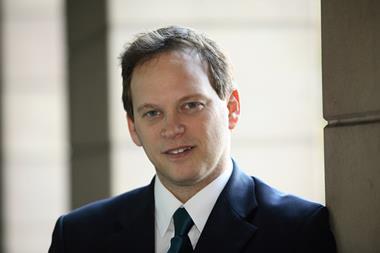Labour MP for Rochdale Simon Danczuk is to raise in Parliament what he has claimed is the “unfair” allocation of money from the Government’s High Street Innovation Fund.
Last week the Government announced the fund in response to retail guru Mary Portas’ 28 recommendations to government aimed at turning around Britain’s ailing high streets.
The £10m High Street Innovation Fund aims to help 100 councils in areas most blighted by high vacancy rates fill empty shops with new businesses. These included Westminster, Southwark, Lambeth and Merton in London.
Danczuk, however, has claimed that the data set used by the Government was “wholly inappropriate”.
Danczuk, who sits on the Communities and Local Government Select Committee, has claimed to have seen an email from DCLG admitting the Government has no figures for empty shops on high streets across the UK and has used a different allocation method. This is based on all empty non-domestic buildings across a local authority area including offices, business parks and factories.
He said: “Why have a High Street Innovation Fund (HSIF) using data outside the high street? What’s more, will local authorities that have received HSIF money be able to apply to be a Portas Pilot as well? It’s a disgrace. The Government is claiming to have limited funds, which is why it’s all the more important to allocate fairly and to those most in need.”
Analysis from the Local Data Company, released this morning, has suggested that one of the areas allocated £100,000 from the fund - Rickmansworth - has just two vacant shops. The lowest shop vacancy rate is Reigate, at 2%. It found Dudley to be the area with the highest rate, at 32.4%. Nearly two-thirds (63%) of the core towns have a shop vacancy rate that is higher than the current national average of 14.6%.
Matthew Hopkinson, director at the Local Data Company, said: “This quick analysis shows that there is a wide variance in town centre health within these local authorities’ core towns. While the government has published no allocation criteria, it clearly goes beyond assisting the weaker town centres through inclusion of below average vacancy towns.
“As such it would suggest that the grant is also targeted towards the important role of supporting existing established businesses on high streets to ensure they continue to remain as occupiers.”
The Department for Communities and Local Government has responded saying that it uses business rates data to identify empty properties. Those paying on a discounted rate can indicate vacancies, according to a spokesperson for DCLG.
DCLG wants the High Street Innovation Fund to be used by areas that were affected by last year’s riots and has allocated money on the basis of crimes reported during the riots.
A DCLG spokesperson said: “Business rates data is by far the most accurate at reflecting the number of empty business premises, and is provided by councils themselves - to use any other data would be to short-change councils whose high streets face the greatest challenges and who were worst affected by last year’s riots.”
DCLG said it wants local authorities to use the fund to address empty properties on the high street.
It said: “We have been very clear - as was Mary Portas - that this is not just about retail and empty shops. We want high streets to be the centre of our communities by having a wide range of businesses and activities.”
The grant is going to local authorities and this data is local authority wide - not individual towns or villages, it added.
























1 Reader's comment